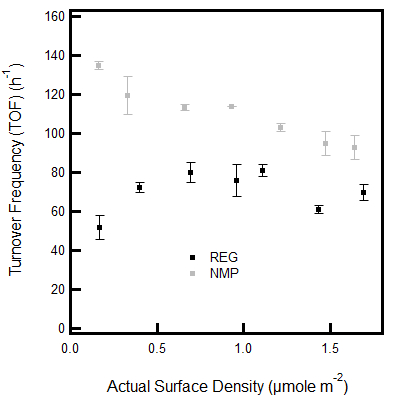2020 Virtual AIChE Annual Meeting
(741f) Elucidating Structure-Function Effects of Pore Architecture for Aminosilane Functionalized SBA-15
Authors
Ashwin Kane - Presenter, The Ohio State University
Nitish Deshpande, The Ohio State University
Nicholas Brunelli, Ohio State University
Mesoporous materials are commonly used as catalytic supports because they are thermally stable and robust with tunable pore architecture. While commonly used, mesoporous materials can have a complex pore architecture that impacts observed catalytic properties. The key challenge that our work will address is the elucidation of structure-function relationships of the micropore network of SBA-15. Indeed, SBA-15 and other mesoporous materials have both micropores (< 2 nm) and mesopores (2 â 50 nm). The dual porosity in their structure provides a high surface area that enables a wide range of catalyst densities (catalyst moles nm-2 silica) to be achieved on their surface. The current work examines the effect of tuning pore architecture of micro-mesoporous silica supports through reducing the micropore volume. We synthesize SBA-15 using typical conditions (material is labelled REG SBA-15) as the model micro-mesoporous silica support and modify this synthesis method to reduce microporosity and obtain SBA-15 with limited to no micropores (NMP SBA-15). As a proof of concept, we investigate the impact of micropore elimination using the Knoevenagel condensation as the test chemical reaction, and tertiary amines functionalized on SBA-15 with density ranging from 0.1-1.6 μmol m-2 SBA-15 as the test catalysts. The initial turnover frequency (TOF0) is determined for different amine surface densities. A clear distinction in catalytic activity is observed between materials with and without micropores. At similar surface densities, the NMP materials consistently show a higher TOF0 than their REG counterparts. Hence, the current work provides experimental insight on the impact of support pore architecture on catalyst activity and contributes to the design of lucrative supported catalysts with improved performance.


